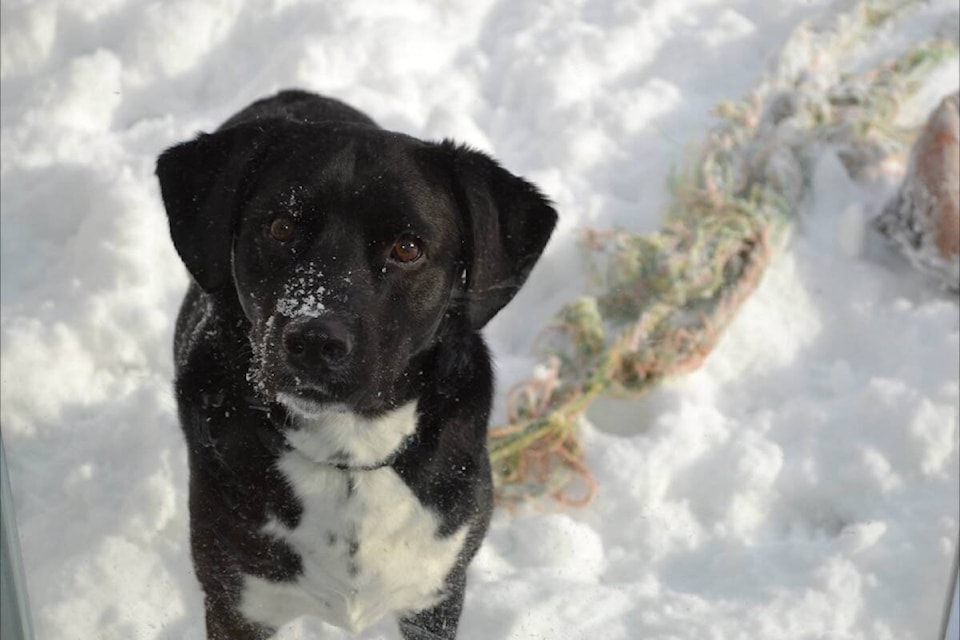In March of 2023, the Canadian Veterinary Medical Association issued a warning about a severe shortage of veterinary professionals throughout the country (and globally) impacting the health and well-being of the profession.
According to the Canadian Occupational Projection System, the shortage in Canada is expected to continue until 2031.
“I’d say it was pretty, pretty bad,” says Sam Doherty, practice manager of Campbell River’s Coastland Veterinary Hospital. “This practice prior to COVID, had seven vets, and during COVID we went down to three. The population of Campbell River just kept growing, so it was very similar to human healthcare where there are just not enough doctors for the amount of patients.”
The four veterinarians left due to various reasons, such as retirement and moving to a different city. Doherty said her optimal number would be six or seven and, luckily, she is inching closer to that. Her practice employs five now, after hiring two in 2023.
“Our hospital is in a better place but, in general, there is a veterinary shortage over the entire country and (the) States and that is still going on.”
Due to the shortage, Coastland was unable to accept new clients into the practice. They were only able to take on emergency-care clients, with a priority on life-saving.
“It was a difficult time but we had to protect the team we had,” says Doherty.
Eventually, Coastland was able to catch up with its existing clients and kept a “new client wait list.” They would take them in during cancellations or when new opening slots came in. They are now fully open to new clients.
Dr. Kate Wood, a general practitioner with Coastland for 14 years, agrees with Doherty. Wood said she thinks the demand for veterinarians in Campbell River has slowed down since COVID as clients have been returning to their regular flow of life.
“It’s more impactful in small towns,” says Wood of the shortage. “When we lose a veterinarian in town here it has a lot larger impact than if you lost a veterinarian in Victoria or Vancouver, so I do think it’s more noticeable and it has more impact in smaller areas.”
Wood attributed the causes of the shortage as a “perfect storm.”
“For British Columbia, we basically put in about 70 students into school every year since the ‘60s and what vet medicine and care and husbandry looked like in the ‘60s is not even comparable to what it is today,” she says. “On average, there are more pets per household and more people with pets than there were in the ‘60s, and the care for the animals has increased quite a bit … dermatology and dentistry and routine care in orthopedic surgery isn’t something that was really done routinely.
“I think overall, there has been an increased demand in vets and there hasn’t been a match for that increased demand coming from the vet school, so I think that is a big component of it.”
Wood is happy there are now more seats for British Columbians at the Western College of Veterinary Medicine in Saskatoon, addressing the need for more medical professionals dealing with animals. However, there will be at least a four-year period before graduating students join practices.
It gives Wood belief the industry will be in a better place in a few years.
WCVM is one of five veterinary schools in the country (two are faculties of veterinary medicine at the Université de Montréal and the University of Calgary). The schools are extremely competitive to get into.
The competitiveness and investment needed to become a veterinarian could be another reason why so many people might be put off by trying to get further in the field or even start.
“It’s a big process,” says Wood. “You are generally looking at least six years to eight years or more of commitment to become a vet and that’s a lot of education and a lot of time to put into something. I think it would be a bit of a rough life and maybe not the best-paying wages for a lot of people, especially if you are in smaller areas as well, so I think, honestly, that’s a big component of it but it is a very large investment to go into because it is so competitive. You can put your four years of an undergrad in and keep applying and not get in for eight years, 10 years. It’s a bit daunting that way.”
Doherty suggested the schools could also offer more scholarships and lower fees to make programs more accessible for people to get into post-secondary education.
As for Coastland, Doherty focuses a lot on her staff taking on mentorship and teaching roles. In the past three years over the summer, they have hosted two veterinary students. One of them is now a full-fledged employee. The practice is also open to students focusing on becoming registered veterinary technicians/technologists (RVT), joining the practice for summer jobs and their practicums.
READ ALSO:



